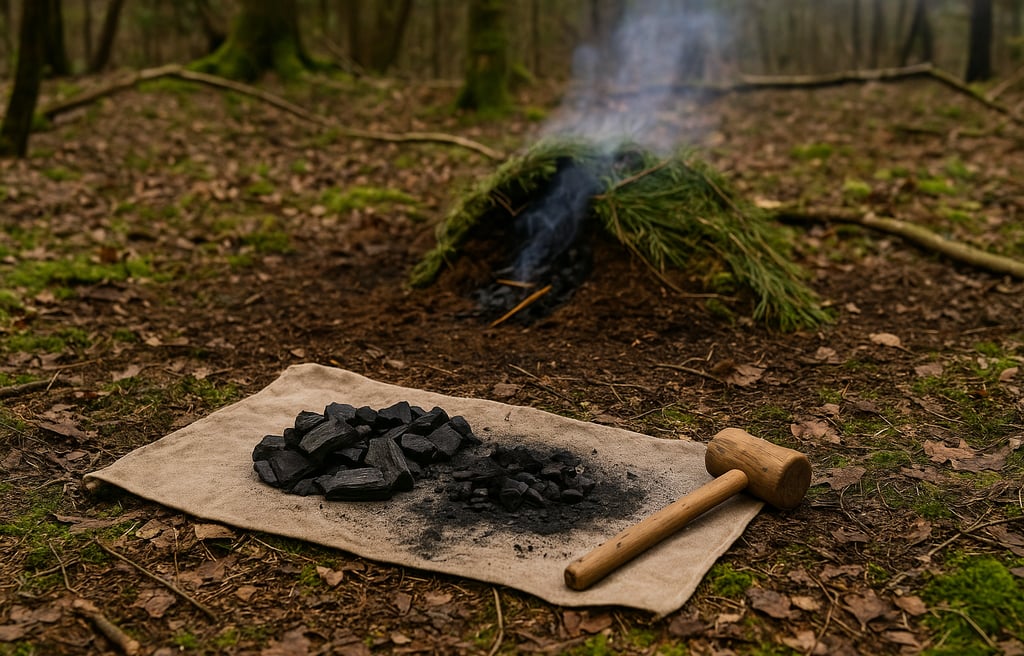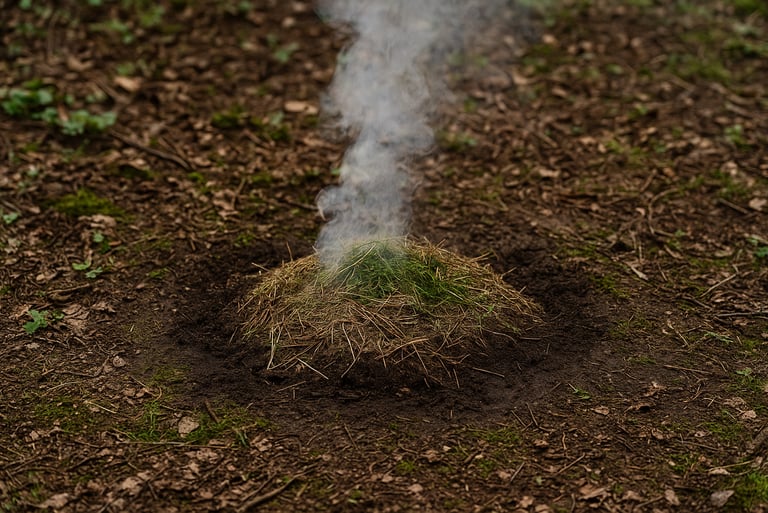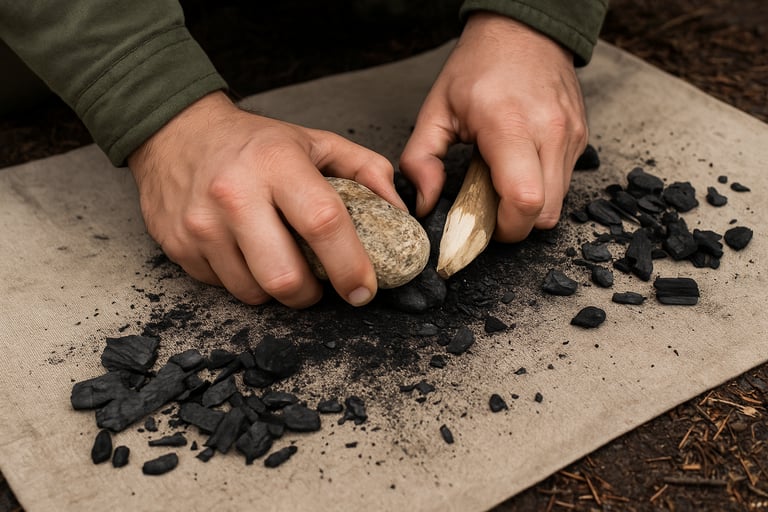How to Make Charcoal and Biochar in the Wilderness: A Simple Survival Method
Learn how to make charcoal and biochar in the wild using simple survival methods. This guide covers primitive techniques, practical uses, and how to turn wood into powerful tools for fire and soil.


How to Make Charcoal and Biochar in the Wilderness: A Simple Survival Method
Making charcoal and biochar in the wild is a surprisingly practical survival skill. Whether you're looking to improve your campfire cooking, purify water, or create long-lasting soil enhancers, learning how to produce these carbon-rich materials using natural methods can be a huge asset. Charcoal is also a key ingredient in several natural DIY tools and adhesives you can craft in the wild using only primitive techniques.
This guide breaks down the basics of making charcoal and biochar with just simple tools and techniques and all from scratch, in a wilderness setting.
What Are Charcoal and Biochar — And Why Should You Care?
Charcoal is made by slowly burning wood in a low-oxygen environment. The result is a lightweight, blackened material that burns hotter and cleaner than raw wood. It’s excellent for cooking, heating, filtering water, and even crafting black powder in a survival context.
Biochar, while nearly identical to charcoal in form, is specifically used to enrich soil. It can hold nutrients and moisture, making poor soil more fertile — an incredibly useful resource if you're trying to grow food in a long-term off-grid situation.
Understanding the difference matters. Charcoal helps your fire last longer and burn hotter. Biochar helps your plants grow stronger and your soil stay healthy.
The Basics of Making Charcoal in the Wild
To make charcoal in the wilderness, you need dry hardwood, a way to contain the burn, and patience. Start by gathering dense hardwood like oak, hickory, maple, or even fruit wood. The harder and drier the wood, the better the charcoal.
You’ll need to create a method of slow-burning the wood with limited oxygen. The simplest way is the “earth pit” method. Dig a shallow pit, stack your wood vertically or lay it flat, then light a small fire on top. Once the fire spreads, cover the pit with dirt, grass, and ash — leaving just a small opening for smoke to escape. This chokes the oxygen but allows the fire to smolder slowly, turning wood into charcoal instead of ash.
Let it burn low and slow for several hours, or overnight. You’ll know it's done when the smoke changes color or stops entirely. Let it cool fully before digging it up.
Turning Charcoal into Biochar for Survival Gardening
Once you’ve created charcoal, turning it into biochar is easy — it’s mostly about how you prepare and use it.
To make it work in soil, the charcoal needs to be crushed into small chunks or powder. You can break it up with a rock or mallet on a tarp. Don’t worry about making it perfect — smaller is better, but irregular sizes are fine.
Before using it in your soil, soak the crushed charcoal in nutrient-rich material like compost tea, urine (yes, it works), or even just a mix of dirt and old food scraps. This process is called “charging” the biochar. It helps the carbon absorb nutrients and microbes before you mix it into your soil.
Once charged, spread it around your survival garden, mix it into soil, or use it to help regenerate tired patches of ground.
Practical Uses for Charcoal in Survival Situations
Beyond its soil-enhancing uses, charcoal has many bushcraft and survival applications.
You can filter water with it by layering charcoal inside a hollowed stick or makeshift filter tube. For more detailed techniques, check out our guide to wilderness water purification and hydration to stay safe in the wild. It’s not a complete purifier, but it removes many toxins and improves taste.
Charcoal is also great for fire-starting and cooking — it burns hotter, cleaner, and longer than raw wood, making it more efficient when fuel is limited.
In some cases, powdered charcoal can be used to create natural remedies, such as reducing stomach toxins (activated charcoal) or preventing odor in poultices.
And if you're crafting primitive black powder or ink, it's one of the key ingredients.
A Low-Tech, High-Value Skill for Off-Grid Life
Learning how to make charcoal and biochar in the wilderness might seem old-school, but it’s one of the most valuable off-grid skills you can learn. It requires no special equipment and gives you powerful tools for cooking, purifying, and growing — all from a pile of dry wood and a controlled fire.
Once you try it, you’ll never look at a smoky fire pit the same way again.




© 2025. All rights reserved About | Privacy Policy | Terms and Conditions | Affiliate Disclosure | Disclaimer


